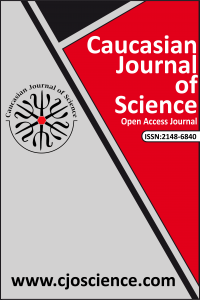SENTEZLENMİŞ BAZI İLAÇ ETKEN MOLEKÜLLERİNİN ASİTLİK SABİTLERİNİN TEORİK OLARAK İNCELENMESİ
Çalışmada ketoprofen (1) ve etodolak (2) ilaç etken maddelerinin teorik olarak PA (proton affinitesi) ve pKa’larının (asitlik sabitleri) bulunması amaçlanmıştır. Sentezlenmiş bazı ilaç etken moleküllerinin veri hesaplamalarında CACHE 6.1 paket programı ve AM1, PM3, PM5 ve MNDO yöntemleri kullanılmıştır. Yapılan gaz ve sıvı fazı çalışmalarında sentezlenmiş bazı ilaç etken moleküllerinin nötr, olası proton alma ve proton verme modellerinin termodinamik hesapları yapılmıştır. Moleküllerin asitlik–bazlıkları ve nükleofilik–elektrofilik karakterleri ile aktiviteleri, girdiği reaksiyon tipleri arasında çok yakın bir ilişki olduğu için için sözü edilen fiziksel parametre ve analitik sabitlerinin teorik incelemesinin önemli olduğu inancıyla çalışılan moleküller detaylı bir şekilde incelenmiştir. Kullanılan yöntemler ile elde edilen proton affinite, nükleofiliklik ve asitlik sabitleri değerleri arasındaki paralellik elde edilen sonuçların güvenli olduğunu göstermiştir.
Anahtar Kelimeler:
Organik kimya, asitlik sabitleri, asetik asit, indolasetik asit, ilaç maddeleri
SENTEZLENMİŞ BAZI İLAÇ ETKEN MOLEKÜLLERİNİN ASİTLİK SABİTLERİNİN TEORİK OLARAK İNCELENMESİ
In the present study, it was intended to determine the theoretical values of PA (proton affinity) and pKa values (acidity contants) of molecule 1 (ketoprofen) and molecule 2 (etodolac) which are active materials of the formerly mentioned drugs, to elucidate the activity pattern. CACHE 6.1 packet program has been used through out this study. The bases sets of AM1, PM3, PM5 and MNDO have been used. The gas and liquid phase calculation were performed, to determine the thermodynamic parameters of the neutral, cationic and anionic models of two above mentioned molecules. Since there exists a very close relation between acidic – basic character of molecule and the type of reaction in which it takes place we have attempted to evaluate the calculated physical and thermodynamic parameter as well as the acidity constats to suggest a beter synthetic pathway to increase the yield and the acitivity of studied compounds.
Keywords:
Organic chemistry, acidity contants, acetic acid, indolacetic acid, drug substances,
___
- Adler, T. K., Albert, A. (1963). The Biological and Physical Properties of the azaindoles. Journal of medicinal chemistry, 6(5), 480-483.
- Charif, I. E., Mekelleche, S. M., Villemin, D., Mora-Diez, N. (2007). Correlation of Aqueous pKa Values of Carbon Acids with Theoretical Descriptors: A DFT Study. Journal of Molecular Structure (Theochem), 818, 1-6.
- Cookson, R. F. (1974). The Determination of Acidity Constants. Chemical Reviews, 74 (1), 5–28.
- Dissanayake, D.P., Senthilnithy, R. (2009). Thermodynamic Cycle for the Calculation of Ab Initio pKa Values for Hydroxamic Acid. Journal of Molecular Structure (Theochem), 910, 93-98.
- Dalkara, S., Akgün, H. (2000). Farmasötik Kimya, Cilt I. İkinci Baskı, Hacettepe Üniversitesi Yayınevi, Ankara, 578-581. Ebead, Y.H. (2010). The Role of the Medium On The Acid Dissociation Constants of Some Azo Dyes in View of Experimental and Theoretica Data. Journal of Molecular Structure, 982 (1–3), 100-106.
- Ergenç, N., Gürsoy, A., Ateş, Ö. (1997). Farmasötik Kimya Ders Kitabı. İstanbul Üniversitesi Basım ve Film Merkezi, İstanbul, 5-9.
- Ghalami-Choobar, B., Dezhampanah, H., Nikparsa, P., Ghiami-Shomami, A. (2012). Theoretical Calculation of the pKa Values of Some Drugs in Aqueous Solution. International Journal of Quantum Chemistry, 112, 2275–2280.
- https://www.drugbank.ca/drugs/DB01009, (01.12.2018).
- https://www.drugbank.ca/drugs/DB00749, (01.12.2018).
- Liptak, M. D., Shields, G. C. (2001). Accurate pKa calculations for Carboxylic Acids using Complete Basis Set and Gaussian-n Models Combined with CPCM Continum Solvation Methods. Journal of the American Chemical Society, 123, 7314-7319.
- Katritzky, A.R., Szafran, M. (1989). Heterocyclic Chemistry. Journal Molecular Structure (Theochem), 179-191.
- Kaypak, N.P. (2005). Bazı Biyolojik Aktif Heteroaromatik Moleküllerin Sentezleri Asitlik Sabitlerinin Deneysel ve Teorik Olarak Saptanma. Doktora Tezi, Osmangazi Üniversitesi, Fen Bilimleri Enstitüsü, Eskişehir.
- Murlowska, K., Sadlej-Sosnowska, N. (2005). Absolute Calculation of Acidty of C-Substityted Tetrazoles in Solution. Journal of Physical Chemistry A, 109, 5590-5595.
- Niazi, A., Zolgharnein, J., Davoodabadi, M. Z. (2008). Spectrophotometric Determination of Acidity Constant of Some Indicators in Various Micellar Media Solutions by Rank Annihilation Factor Analysis. Spectrochimica Acta Part A: Molecular and Biomolecular Spectroscopy, 70 (2), 343-349.
- Öğretir, C., DEMİRAYAK, Ş. (1985). Bazı Benzimidazol Türevlerinin Sentezi ve Fizikokimyasal Özelliklerinin İncelenmesi. TBAG, Proje Anadolu Üniversitesi Fen-Edebiyat Fakültesi, Eskişehir.
- Öğretir, C. (1979). Değişik Pirilo (3,4-d) Piridoizin Türevlerinin Asitlik Sabitlerini Bulunması ve Değerlendirilmesi. Doçentlik Tezi, Eskişehir Devlet Mühendislik Mimarlık Akademisi, Eskişehir.
- Sadlej-Sosnowska, N. (2007). Calculation of Acidic Dissoc,ation Constants in Water: Solvation Free Energy Terms. Their Accuracy and Impact. Theoretical Chemistry Accounts, 118, 281-293.
- Serjeant, E. P., Dempsey, B. (1979). Ionisation Constants of Organic Acids in Aqueous Solution, International Union of Pure and Applied Chemistry (IUPAC). IUPAC Chemical Data Series No. 23.
- Solomons,T.W.G. (1996). Organic Chemistry, 6th ed., John Wiley&Sons, USA.
- Speranza, M. (1986). The reactivity of heteroaromatic compounds in the gas phase. In Advances in Heterocyclic Chemistry, Academic Press, 40, 25-104.
- Yarlıgan. S. (2001). Bazı Piridazinon Türevleri Üzerinde Sentetik Deneysel Ve Teorik Çalışmalar. Doktora Tezi, Osmangazi Üniversitesi, Fen Bilimleri Enstitüsü, Eskişehir.
- Yayın Aralığı: Yılda 2 Sayı
- Başlangıç: 2014
- Yayıncı: Kafkas Üniversitesi
Sayıdaki Diğer Makaleler
EĞİTİM FAKÜLTESİ DERGİLERİNDE YAYINLANAN FEN EĞİTİMİ MAKALELERİNİN YÖNTEM EĞİLİMLERİNİN ANALİZİ
Orhan KARAMUSTAFAOĞLU, Salih DEĞİRMENCİ
SENTEZLENMİŞ BAZI İLAÇ ETKEN MOLEKÜLLERİNİN ASİTLİK SABİTLERİNİN TEORİK OLARAK İNCELENMESİ
Zeynep TURHAN İRAK, Cemil ÖĞRETİR
THE RELATIONSHIP BETWEEN SLEEP DURATION OF NEWBORNS AND SLEEP QUALITY OF PREGNANT
HİPERKOLESTEROLEMİ OLUŞTURULMUŞ FARELERDE KEFİR VE SİMVASTATİN ETKİLERİNİN ARAŞTIRILMASI
INVESTIGATION OF TRANSFER FACTORS OF NATURAL RADIONUCLIDES FROM SOIL TO FODDER IN KARS, TURKEY
Gülçin BİLGİCİ CENGİZ (EKER), İlyas ÇAĞLAR
Muhitdin YILMAZ, Sevda GÖĞTEPE YANAR, Evren KOÇ, Yusuf ERSAN
